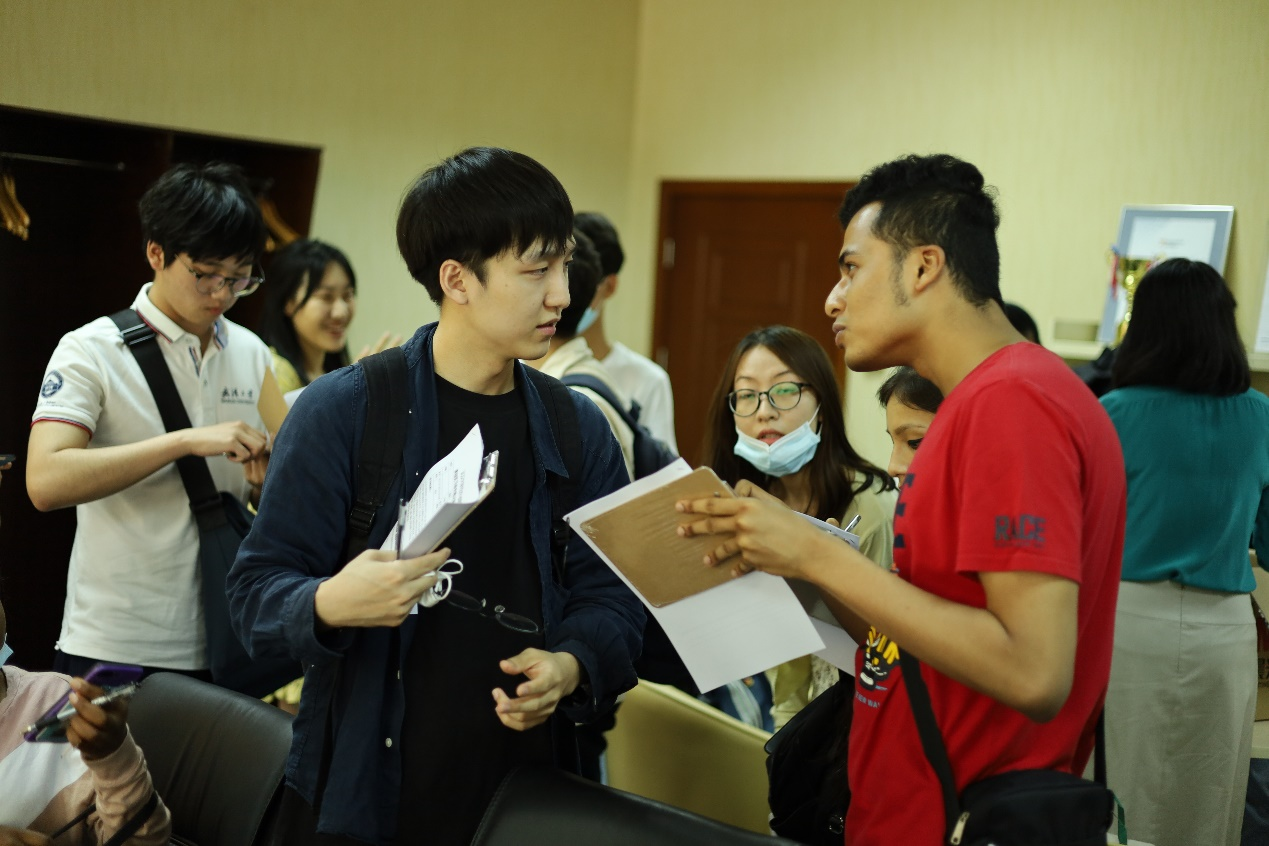The epidemics have overwhelmed the world in early 2020, but Wuhan has been back to order since April 2020. With over 100 international students enrolled, the learning and teaching in international classes of Economics and Management are ensured mainly online in the academic year 2020-2021. However, foreign students in Wuhan city enjoy the dynamic and colorful campus life. The course “International Economics” organized a site-seeing to Jianghan Customs Museum as an alternative way of learning about international economies, and 4 foreign students enrolled in the class at Wuhan participated.

Dialogues between the instructors and students highlighted the experiences during the trip.

The Hankou Customs House, located in the junction of Jianghan Road and Yanjiang Avenue, is one of the landmarks of Wuhan. Founded on January 21, 1924, the building of Hankou Customs House has height of 46.3 meters, and the top of bell tower is 83.8 meter above ground level, thus made it the highest building in Wuhan at that time. It is listed Historical and Cultural Site Protected at the National Level since 2001. It was renamed "Jianghan Customs Museum" and was re-opened on December 28, 2015. The three-story museum occupies an area of 4,359 square meters, 2,300 square meters of which are for exhibits. Currently, there are 500 historical artifacts on display. There is a beautiful clock tower which is also one of the beauties of the Jianghan customs house museum.
----Tutoring guide

“We have international students from different countries in class. Our destination today is the Jianghan Custom House in Hankou city. It is a historical site of customs administration in modern times of China. It has witnessed ups and downs of foreign trade history in China, as well as the rise and decline of the city.
In online lectures, we have discussed the pattern of trade, the gains from trade and the trade policy in theory, however, when we look back at the history of world trade, we can’t help wondering:
--Is the pattern of trade solely determined by market mechanism, if not, is it sustainable?
--Are the gains from trade purely economic issues, if not, have they been globally optimal?
--How would trade policy affect the local economic well-beings, and what are implications for the trade policy decision makers?
Hope the visit today provide you with a different perspective to think twice on theories we have discussed in textbook.”
----Associate Professor Lin GUO, Economics and Management School

Before going to the Jianghan Customs Museum, I have read about it and was thinking that the museum must be related to International Economy and Business. When I arrived, I was surprised to see the district look like France. I heard from a Chinese student that the area was rented to the government of France, but I didn’t know why.

After entering the museum, we started touring in groups. I started reading about how did the people of Wuhan start their businesses with foreigners and so on. I realized that why the government of France rented that place. Not only France, there were a lot of European countries that were doing business with Wuhan during 1920s.

“During the trip, I gained knowledge about the economy, business and trade in Wuhan city with different countries a century ago. I also had a memorable moment that I wouldn’t forget because I met some Chinese students who were really cooperative, friendly and humble. I appreciate my professor Ms. Guo for arranging the trip and I hope I get the chance to experience more in the future.”
---- RASHED

“Visiting Jianghan Customs House is an unforgettable memory. I had no expectations since I am not a fan of museums. Indeed, it was not just a small museum in Wuhan but a museum that tells Wuhan’s story. I could have learned development of Wuhan from its historical perspective and modern economic and trade situation of Wuhan. It was a great opportunity to have knowledge on the historical style and the changing history of the people's life in the concession area of Hankou, and feel the pulse of the beating of this ancient and young city since the opening of Hankou. Furthermore, it was very honor to see history and the beginning of Wuhan University. I was intrigue by all these pictures on the wall and Jianghan Customs House clock tower is one of the masterpieces of Wuhan classic architecture. It is beautiful enough that I was mesmerized by them.

A day was never enough to see nearly 10,000 pieces of various collections and documents and 500 historical artifacts. Thanks to all who have successfully organized this visit!”
----CHOI Haneol

“The exhibition today shed light on winded evolution of foreign trade in this city, blended with prides and unfortunes. The lessons we’d learnt from Chinese history of opening ports to foreign trade allow Chinese trade practitioners and policy makers readily “put oneself in someone else’s shoes”. The door of China will be more and more open implies not only export but also upgrade and import.
China's firm stance on economic globalization has been systematically expounded on many major international occasions. Major strategies to participate in and promote economic globalization is to develop an open economy, namely by strengthening cooperation with other countries and international organizations.

One Chinese old saying: When I walk along with two others, one of them may surely serve me as my teacher. I will select their good qualities to follow and get rid of their bad ones. With today’s visit as a bridge, we expect the class a platform for communications among course students. In very near future, all of you will contribute to build international partnerships around the world.

No practice, no gains. We count on you to boost global trade and economic growth to achieve win-win outcomes and common development.”
----Associate Professor Lin GUO, Economics and Management School
 Faculty and Staff
Faculty and Staff Academics
Academics International Exchange
International Exchange







